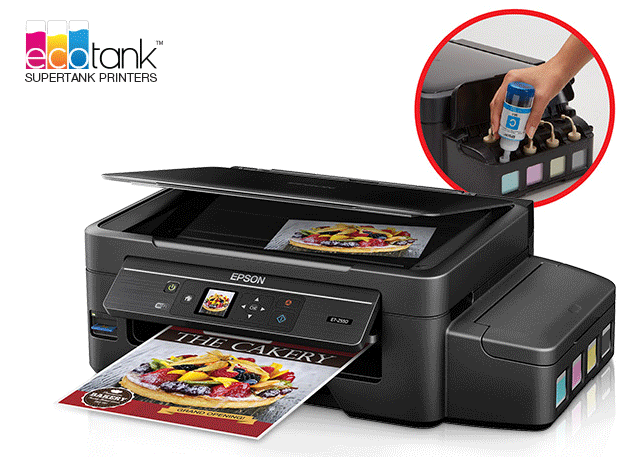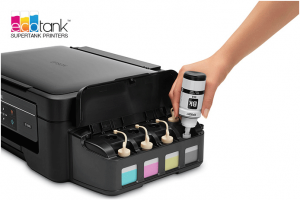 Anyone who has owned an inkjet printer knows that it can be incredibly expensive to replace the ink. This is why there is a thriving business for inkjet cartridge refilling services and third party ink cartridges. The printer manufacturers are more than willing to sell an inkjet printer for under $100 but will charge you upwards of that cost to completely replace all of the ink cartridges inside of it when they run out.
Anyone who has owned an inkjet printer knows that it can be incredibly expensive to replace the ink. This is why there is a thriving business for inkjet cartridge refilling services and third party ink cartridges. The printer manufacturers are more than willing to sell an inkjet printer for under $100 but will charge you upwards of that cost to completely replace all of the ink cartridges inside of it when they run out.
Epson is looking to change that with their new Eco Tank printers. They have actually been sold outside of the US for some time but are now starting to make their way into the US market to help combat the slowing sales of printers and ink. Essentially, the printers do away with the disposable cartridges in favor of large ink tanks that then supply the ink to the printer. The tanks apparently can hold as much ink as 50 cartridges allowing it to print upwards of 8000 or more pages. That is a huge potential savings. But would you spend more for having to purchase fewer replacements?
The Good
 Environmentally, the Eco Tank printers make a huge amount of sense. There is an incredible amount of waste in the inkjet cartridges. The average cartridge holds hardly any ink but has all the plastic and electronics built into it that are just thrown out. Sure, they can be recycled and refilled which reduces the burden but having the large capacity tanks that can be refilled through bottles produces so much less waste.
Environmentally, the Eco Tank printers make a huge amount of sense. There is an incredible amount of waste in the inkjet cartridges. The average cartridge holds hardly any ink but has all the plastic and electronics built into it that are just thrown out. Sure, they can be recycled and refilled which reduces the burden but having the large capacity tanks that can be refilled through bottles produces so much less waste.
There is also a cost savings involved here. The cost estimate to purchase each of the four colors used in the Epson Eco Tank printers is around $13 for the ET-2500 series printers. That means to completely replace the color costs just over $50. In contrast, the high capacity ink cartridges from Epson for the XP-320 printer cost $17 for the three primary colors and $30 for the black. That comes to $81 to replace one set for the cartridge base printer that will print far fewer pages between refills.
The Bad
The upfront cost for the high end ET-4550 printer is huge. At $500, the ET-4550 Eco Tank printer costs more than many color laser multi-function printers. Laser in general is much more economical when it comes to the cost of printing per page. So for someone that is looking to print more graphs than images, the costs may make a laser option a better overall choice. Sure, it has a high cost to replace the toners but they tend to last for more pages. Laser also tends to be faster at printing basic pages compared to inkjet.
Now if you plan to be printing a lot of photographs from the printer, the Eco Tank seems to make more sense. The problem is the cost of professional printing of smaller 4×6 prints is so incredibly low that it makes much more sense to use a printer at your local supermarket than to purchase this printer. After all, printing photos generally requires a heavier stock of paper that is still more expensive than having them printed professionally.
Final Thoughts
If Epson really wants to get consumers wanting to buy the printers, they need to reduce the costs of these printers. Sure, charge more than the practically free inkjets we see on the market now. Just don’t charge twice as much. How about something more like $50 to $100 more. Then consumers will see the advantages much more readily.

Definitely the price for the printers is too high. Also I didn’t see any Eco Tank wide format printer that prints up to 13″ x 19, but haven’t heard back yet from Epson about their plans to manufacture and make one available.
This should catch on with companies that need a high yield at low cost-per-copy, but probably only will when Epson lowers the prices, that’s bound to happen (if and when) HP, Canon and other IJ manufacturers get into this game.
For the moment I’m still holding on to my Epson wide format CMYK printers equipped with aftermarket CIS (continuous inking systems) attached.
Joe D
Dolice Graphics
New York, NY